|
KA6U Background
I first met Peter in March of 2020
(on the air), when he lived in California. He was traveling around to
some of the rare grids on the west coast and I was able to work him in
several of them. The next thing I knew, he had moved to Florida and
before long started an incredible odyssey. He started in the south,
moving each day or two to a new, but rare, grid square. In each grid he
set up his portable EME station and worked many stations around the
world. He took pictures and published descriptions of the places he
went, the contacts made, and people he met. His latest trip started in
early July and ended just a few days ago on September 28, 2021. I donít
have a full account of all the states he visited or grids he activated.
I mostly only worked him in grids I did not have, allowing others to
more easily work him, but I worked him in 12 states and 31 grid
squares. I know his state count is at least double that, and his
activated grid count
may be as well.
Below are some pictures of the
Project Diana activation, showing his setup and some of the people that
were there on September 21, 2021.
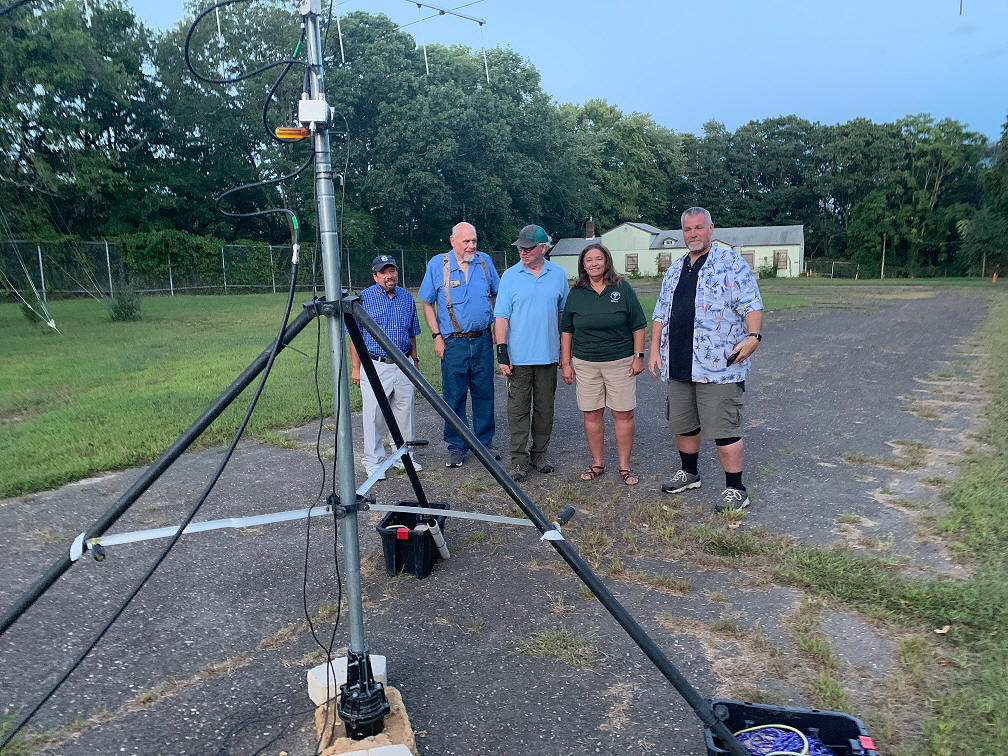
From left, Charlie Cebula AC2ZU,
Russ K2TXB, Peter Van Horne KA6U, Lori Lauber KD2OMA, and an unknown
gentleman.
Lori is the control operator for the
Dish, she opened the site for us and stayed around for most of the
night.
Charlie is one of the operators who
came up to operate 1296 EME with the big dish. Those operations were
carried out at the same time as Peter and I were working 2 meter
contacts. |
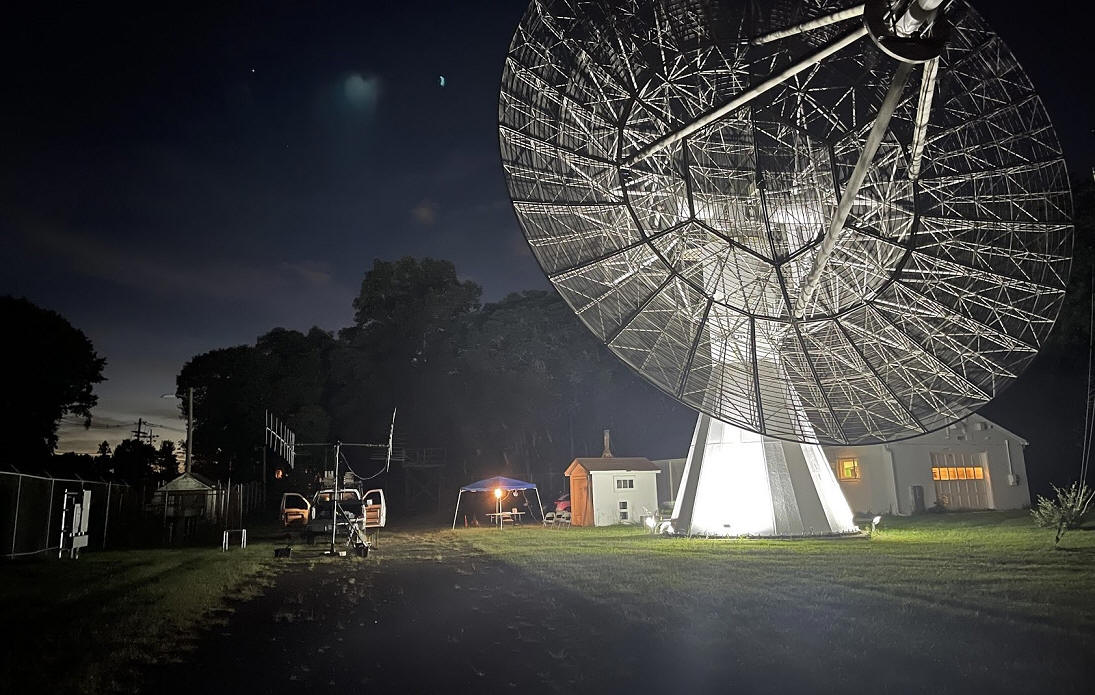
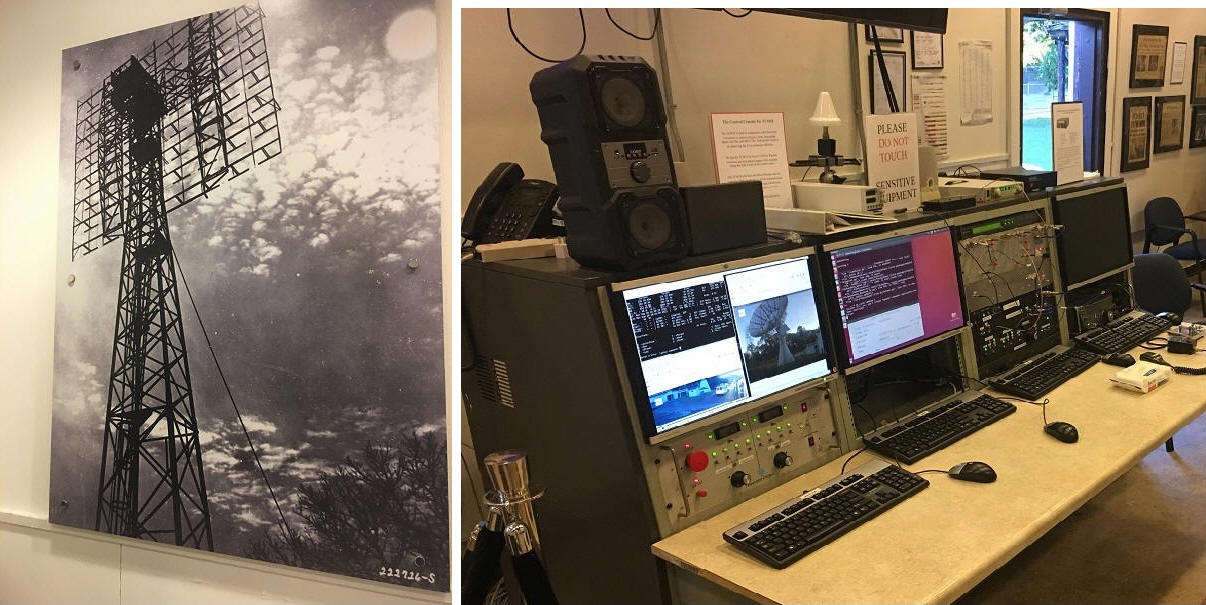

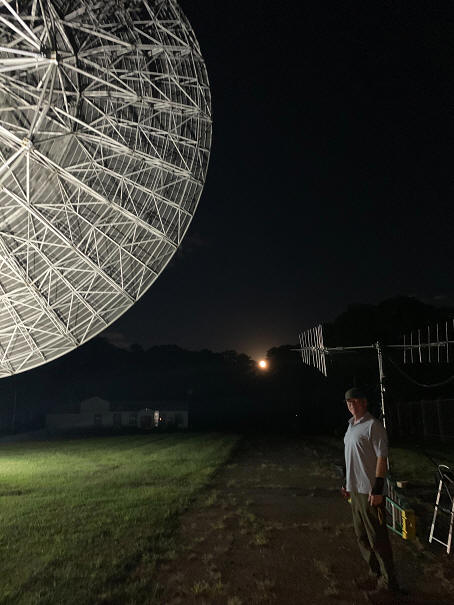
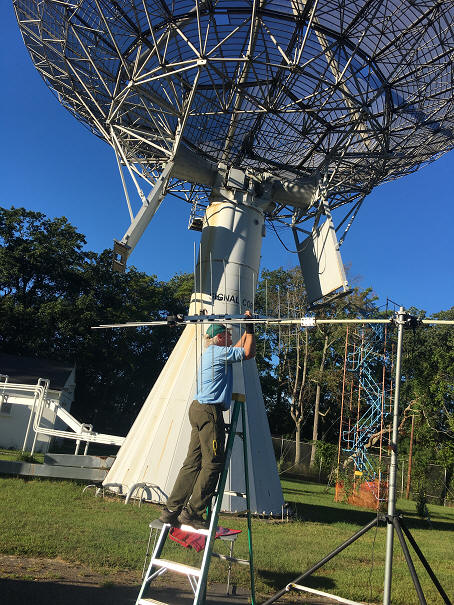
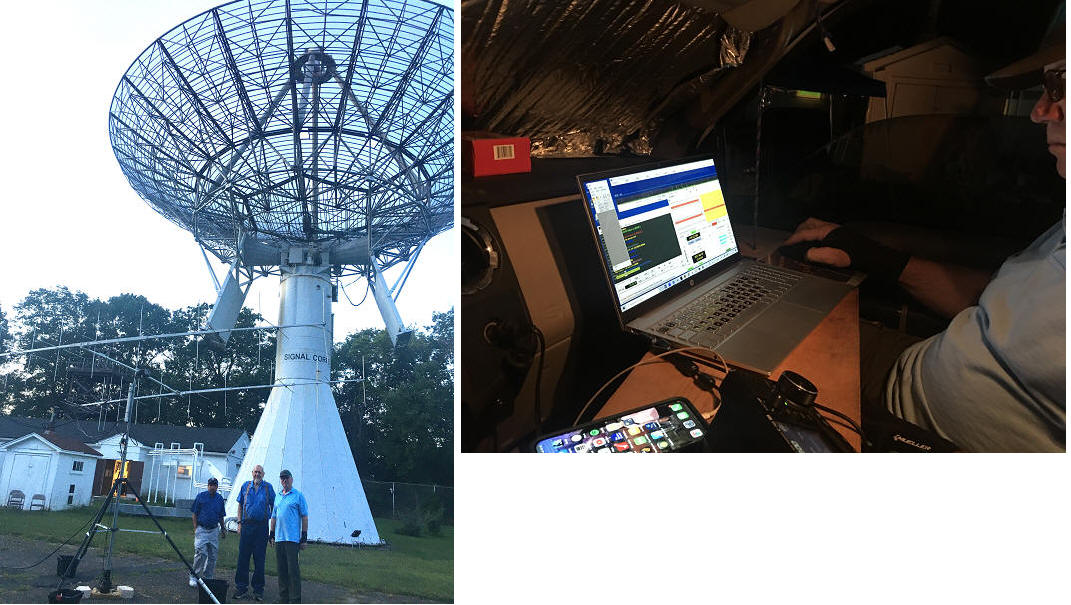
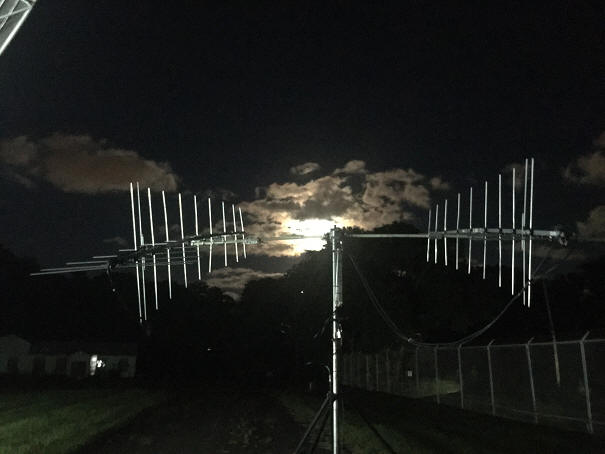
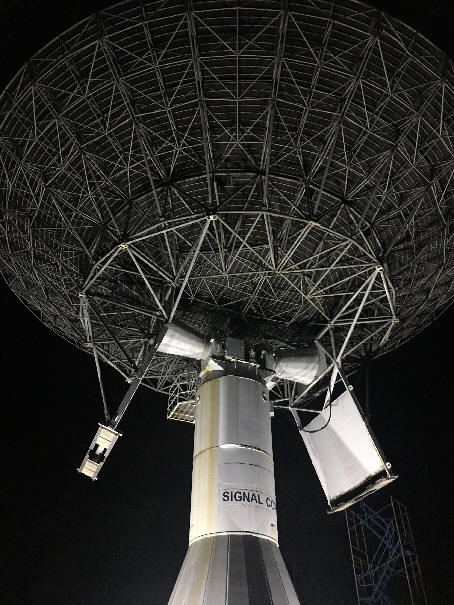 This dish is awesome!
It is about 60 feet in diameter (18 meters), and has a gain of about 46
dBi, on 1296 MHz. The echoes we heard returning from the moon were
reading S9 on the TS-2000X S meter.
This dish is awesome!
It is about 60 feet in diameter (18 meters), and has a gain of about 46
dBi, on 1296 MHz. The echoes we heard returning from the moon were
reading S9 on the TS-2000X S meter.